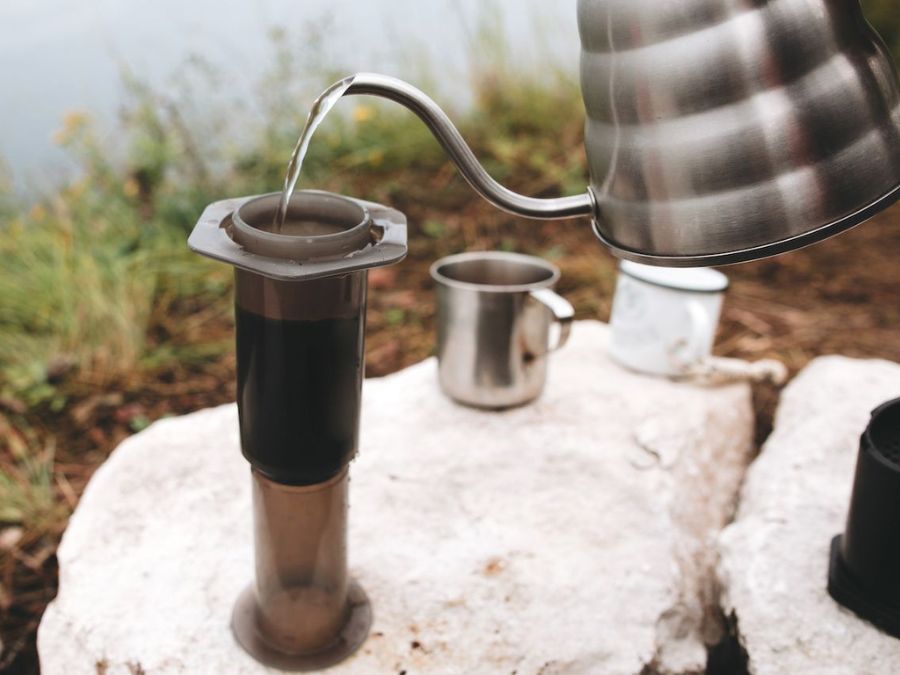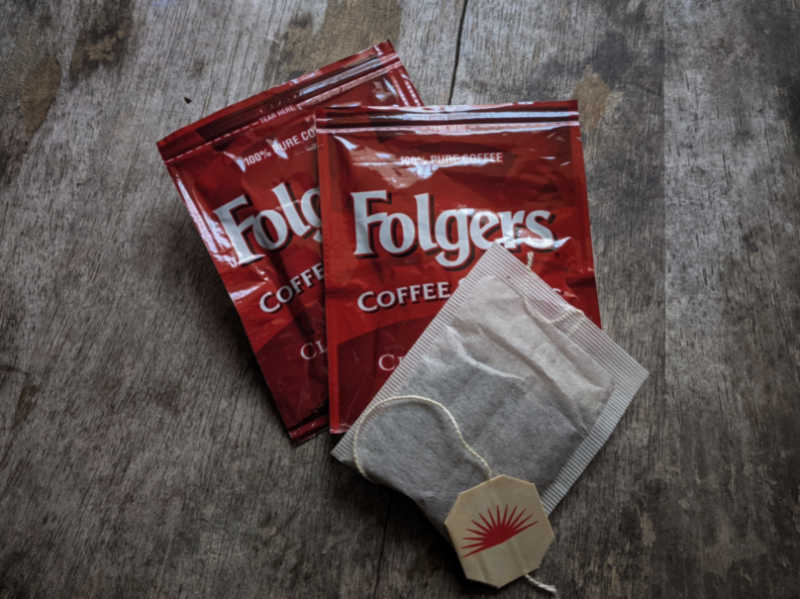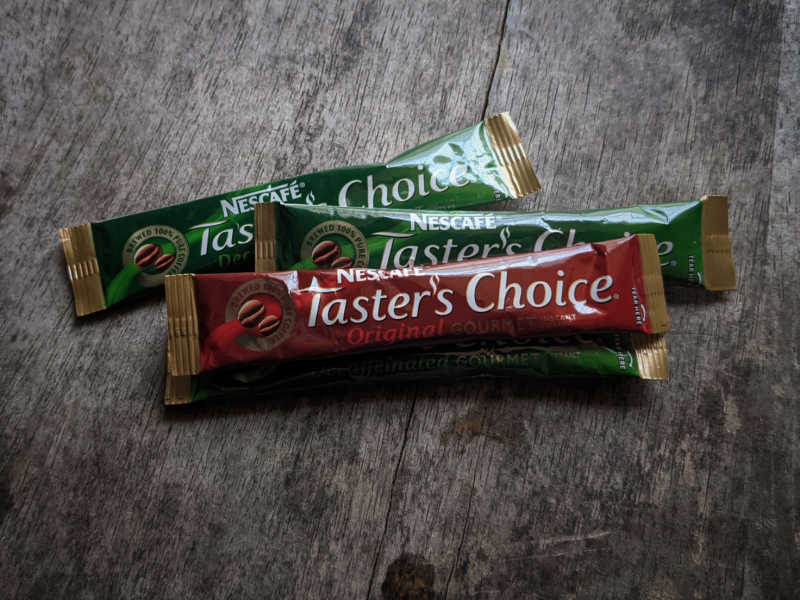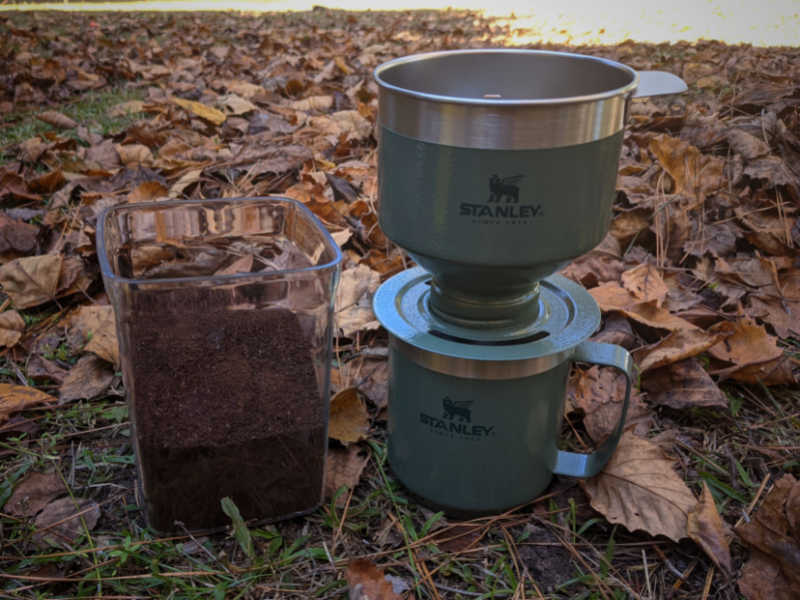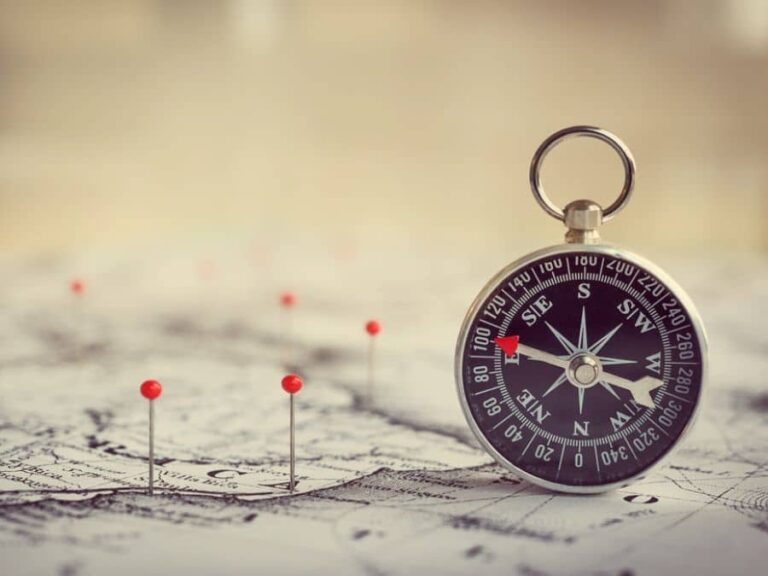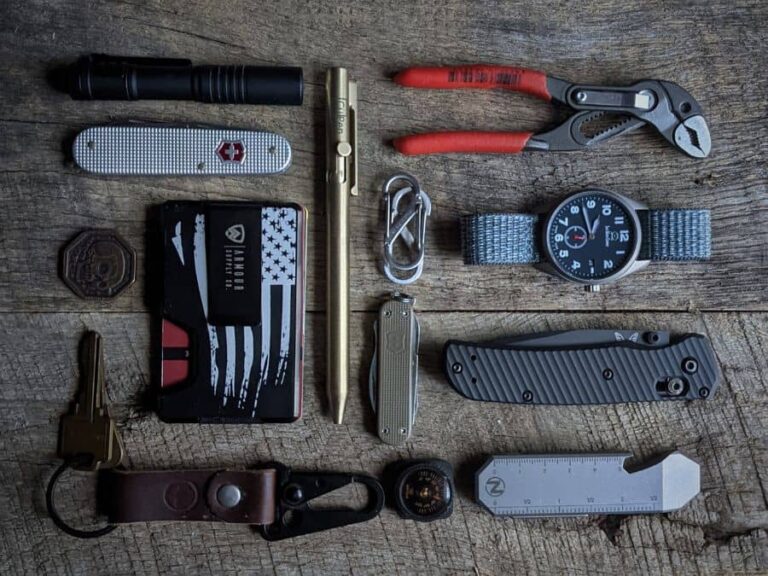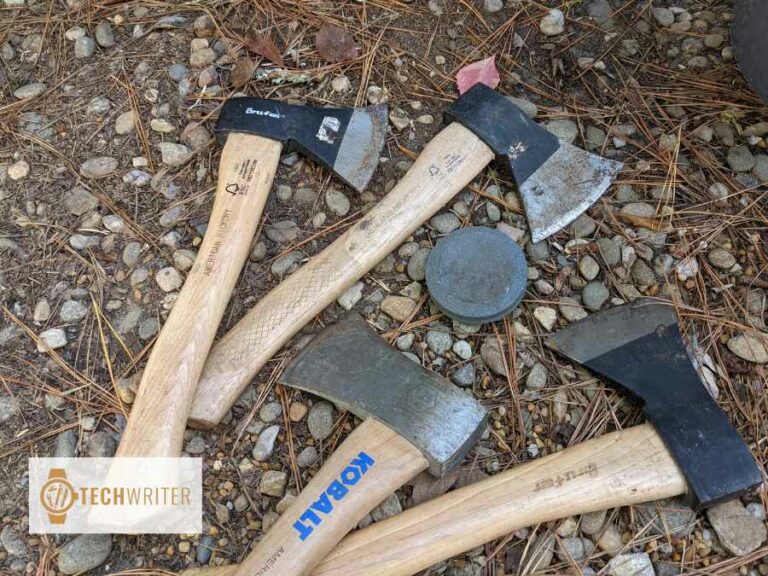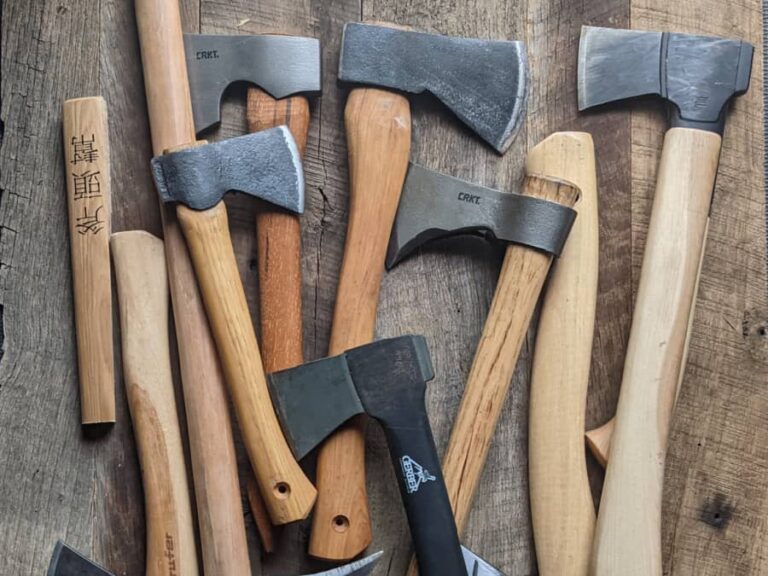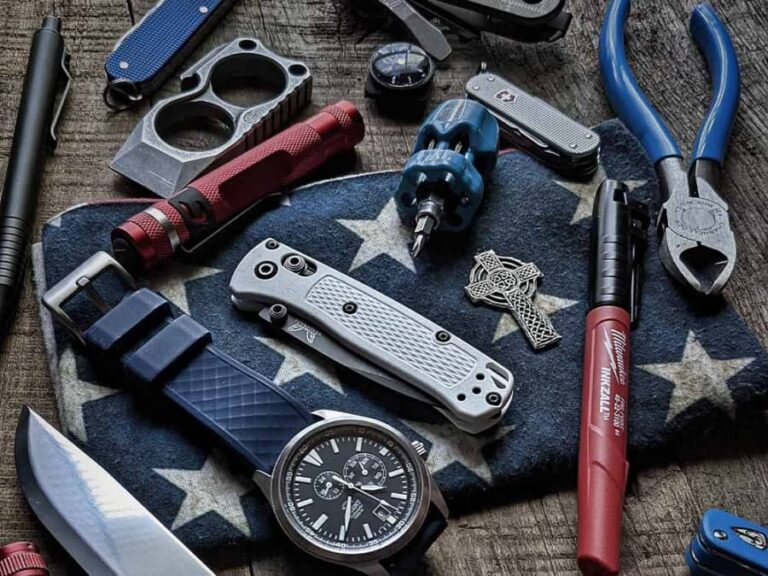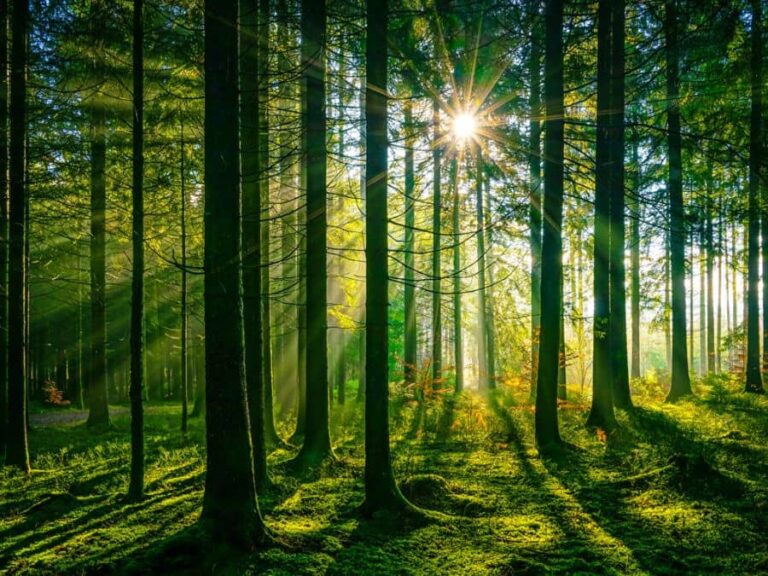How To Make Coffee When Camping
When you head off into the wilderness, you do so with the understanding that you’re going to have to go without a lot of modern conveniences and luxuries. One thing you should not have to go without is a decent cup of coffee.
I’ll be the first to admit that, for me at least, coffee is not a luxury. It’s a necessity. But making coffee on the trail is not always easy, especially if you want a cup that actually tastes good.
Of course, there are a lot of ways to make backcountry coffee. Any of the methods outlined below can work, but none are perfect. It seems that one always has to make some kind of trade-off. In most cases, there’s a choice to be made between quality and convenience. Such is life.
Still, I firmly believe there’s a backcountry coffee making method for everybody. Depending on your method of choice, you can enjoy camp coffee that tastes every bit as good as what you’d get at your local coffee shop or in the convenience of your own kitchen.
The question is, how much weight are you willing to carry, and how much are you prepared to work for your morning caffeine buzz?
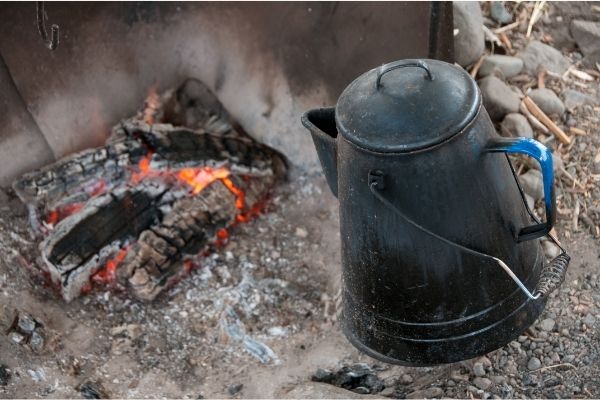
Cowboy Coffee
Cowboy coffee is inarguably the simplest and easiest way to make (non-instant) coffee in the backcountry. You simply heat up water in your desired container, add coffee grounds, and let it sit for 3 to 5 minutes while the hot water extracts flavor from the grounds.
The advantage of this method is that you don’t need any extra equipment. If you’re backpacking with a Jetboil stove, you can make cowboy coffee directly in the accompanying pot. If you’re car camping, you can use essentially any container you may have. The problem is, this method doesn’t exactly make the best-tasting coffee. And you might end up drinking some of the grounds.
Most of the coffee grounds will settle to the bottom, but there will always be some stragglers left on the surface (it helps if your coffee is finely ground, which makes it sink better). Transferring the brew to a mug will help eliminate more of the grounds, but expect a grainy, somewhat bitter-tasting cup of coffee.
Verdict: This method will work in a pinch, but isn’t highly recommended in the long run. Cowboy coffee is best for those whose top priority is keeping pack weight low and extra gear to an absolute minimum.
Bagged Coffee
Bagged coffee is a lot like cowboy coffee. The difference is that your coffee grounds are in a small bag, much like a teabag, so they don’t end up loose in your cup. Steeping coffee grounds in a teabag sounds like such an obvious concept that it’s a wonder more coffee companies don’t offer this option. There are Folgers Singles, of course—those taste about as good as you would imagine—but not a ton of other alternatives.
I’ve met more than a few hikers who prefer to put a couple spoonfuls of coffee grounds into a standard paper coffee filter, and then tie it off using dental floss to create a makeshift teabag. This DIY method works pretty well, though tying a leak-free bag requires some trial and error (also, make sure you use unflavored floss).
I also recently discovered that you can get empty disposable teabags, which you can fill with any coffee or tea you like. They’re made of biodegradable corn fiber, and have a built-in drawstring that’s much easier than messing around with floss.
Verdict: Steeping bagged coffee is less messy than cowboy coffee (though there’s still the issue of disposing of the bag after you’re done). The resulting coffee is less grainy and tastes a bit better, though I’ve noticed that the coffee can take on the flavor of the paper, which I don’t particularly care for. Creating your own coffee bags is also a bit labor-intensive.
Instant Coffee
You might think instant coffee is cheating, and you’re not wrong. You might also think instant coffee isn’t very good, and for the most part you’re not wrong about that either. But instant is, without a doubt, the most convenient way to make a cup of coffee in the backcountry. The best part is, there are no spent coffee grounds to dispose of afterwards.
And truth be told, there are actually some pretty decent brands of instant coffee out there. I taste-tested a whole bunch of them a while back, and if you’re interested in seeing how they stacked up, check out Best Instant Coffee For Backpacking here.. Spoiler alert: the clear winner is Voila Instant Coffee, which is made in small batches up in Oregon. It ain’t cheap, but it’s about as close to the real deal as instant coffee can get.
Verdict: Some instant coffees are better than others, but none are as good as the real thing. That said, it’s easy and convenient to make, and it’ll do the job if you want to really cut down on pack weight and carry less cookware.
Pour Over Coffee
The trendy method beloved by hipsters everywhere, pour over coffee is a bit more laborious to make than your average cup of joe, but I have to admit, it really is just about the best cup of coffee you can get. I’ll skip over the science of why it’s so good—just ask your local barista if you want an earful—but suffice to say, when done properly, it extracts every bit of flavor from your coffee beans while leaving the bitterness behind.
There are a lot of pour over products on the market for hikers, backpackers and campers, and most of them work decently well. I personally have two that I really like; which one I use depends on whether I’m backpacking or car camping.
For car camping, the Stanley Pour Over Set is hard to beat. It’s rugged, durable, makes great coffee, and has a built-in filter so no paper filters are required. The mug that comes as part of the set is also insulated, so it keeps your coffee warm for a very long time. The only downside of the Stanley set is that it’s big, bulky, and a little on the heavy side. It is made of stainless steel after all, which is why I don’t take it on backpacking trips.
When packing light is a necessity, I go with the Wolecok Collapsible Pour Over Coffee Dripper. It’s super lightweight and compact, collapsing down to fit in any backpack without taking up too much space. When it’s time to make coffee, you simply un-collapse it, and set it on your mug of choice. These things are made from food-grade silicone, which is also easy to clean and doesn’t impart any off-flavors to your coffee. They do require a paper filter, which is the only downside as far as I can see (#2 filters fit just right).
Verdict: For the coffee snobs among us, pour over coffee is unbeatable (although making it does take some time and effort). Today’s campers have a variety of pour over products to choose from that are ideal for backcountry use or for car camping.
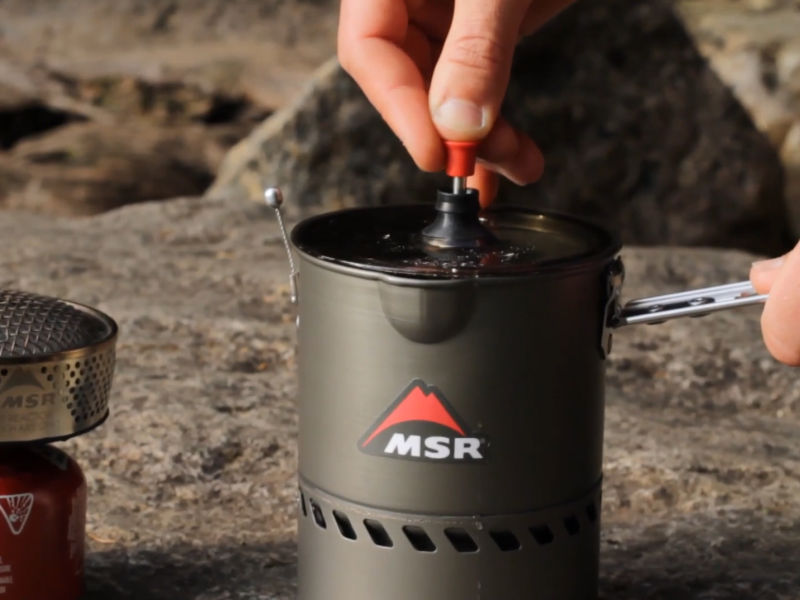
French Press Coffee
A French press makes a rich, robust cup of coffee every time, but the device you use at home probably isn’t all that well-suited to taking into the backcountry. Most French presses are heavy and cumbersome, and many—glass models in particular—are also quite fragile. For that reason, French presses are often taken on car camping trips, but seldom do they get the call on backpacking trips.
Still, they make great coffee. Using a fine mesh plunger to separate and trap the grounds, a French press is near the top of the pack when it comes to taste and quality. And there are a few models made specifically for backcountry use that go a long way toward eliminating bulk and inconvenience.
The Bestargot Camping Titanium French Press is one of the better options. It’s a 750-ml multiuse cookpot and mug with a plunger attachment. Because of its titanium construction it only weighs 7.7 oz. and can be used directly over a burner, grill, or open fire. The only problem is that it’s all metal (even the handle) and can get extremely hot.
Many manufacturers of camp stoves also make additional French press plunger attachments that can be purchased separately. This is arguably the most convenient way to turn the stove you already have into a multifunctional French press. Jetboil, for example, makes a French Press Plunger that’s compatible with their stoves.
Verdict: French press coffee is some of the best you can make in the backcountry, but the French press itself might prove cumbersome. The best case scenario is finding a French press that can double as a cookpot.
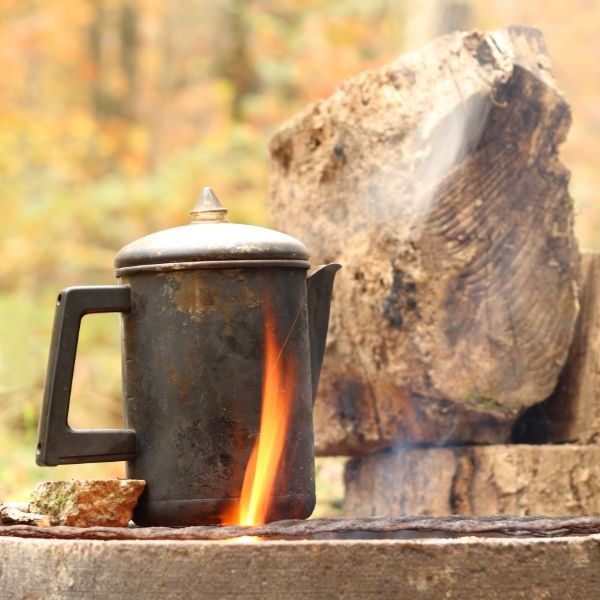
Percolator Coffee
There’s something immensely satisfying about listening to your coffee percolate on a crisp mountain morning. Percolators make good coffee too. Needless to say, there are good reasons why percolators are beloved by campers, but there are equally valid reasons why they’re seldom chosen by backpackers.
Percolators are big, bulky, and cumbersome. A lot of them are intended to make up to 20 cups of coffee, which is great if you’re car camping with a large group of people, but not so great if you’re on a solo hike. The only percolator I would consider taking on a backpacking trip is the Texsport Aluminum 9 Cup Percolator.
This model is fairly lightweight thanks to its aluminum construction (though at a little over 10 oz. it’s still a bit heftier than I’d prefer). Aluminum is also easily bent and can be damaged by long-term fire exposure, which is something to watch out for. On the plus side, it has a fairly streamlined design, and if you pack your coffee, filters, and utensils inside, it could be considered reasonably space-efficient.
Verdict: Percolators are great for car camping, and not-so-great for backpacking. Ultimately, they’re best for large groups of people or for situations in which you plan to use the same campsite for a long period of time.
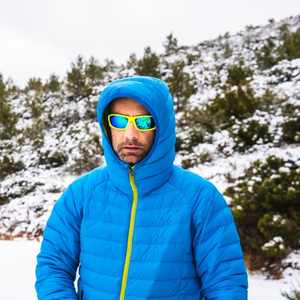
Alan Dale is an experienced backpacker and adventure sports athlete who pays the bills by writing. Married with a small brood, Alan often has his kids in tow on many of his adventures. You can visit Alan here: https://siralandale.com/

